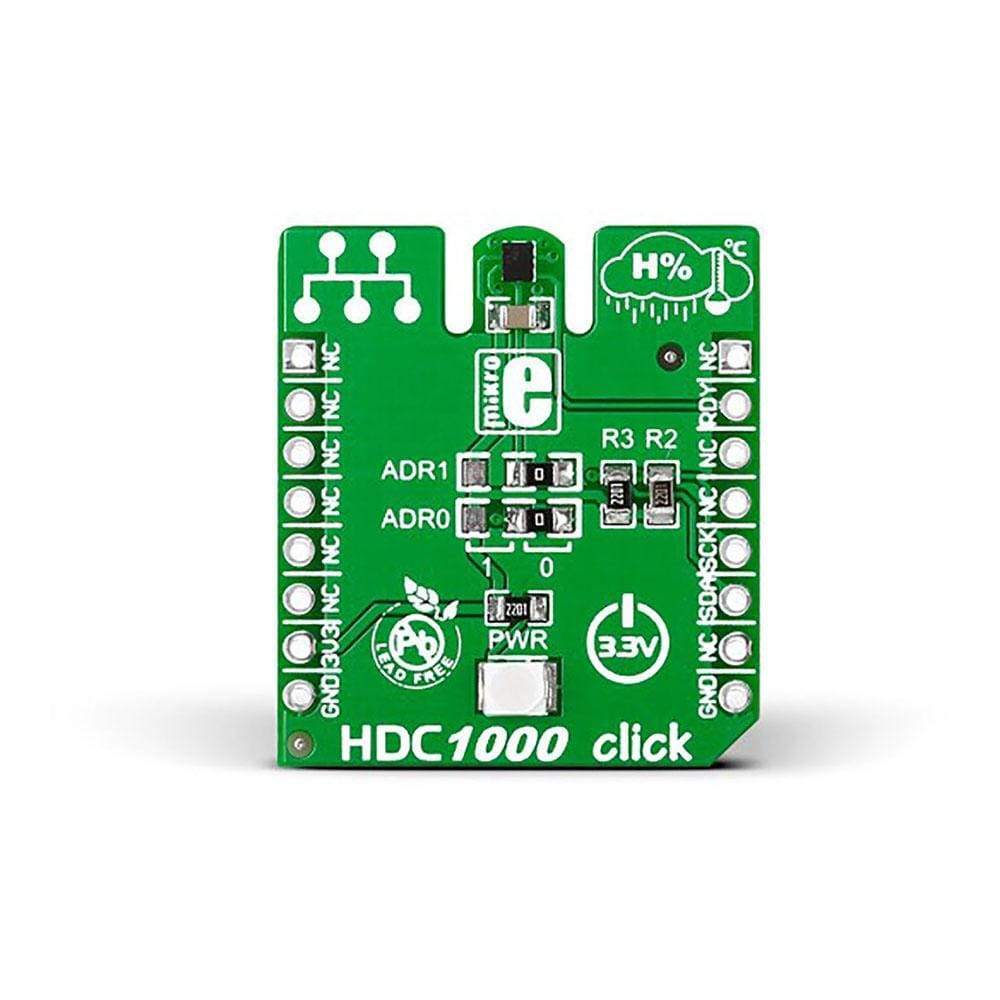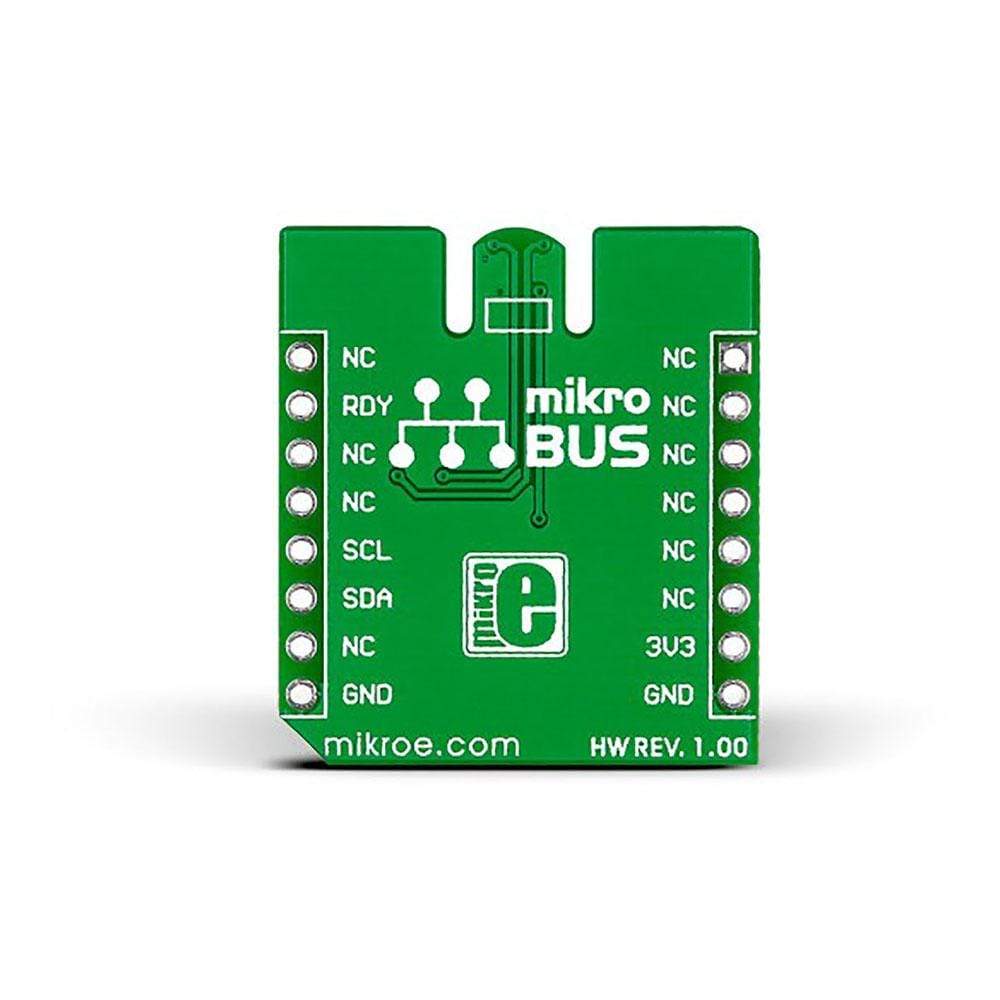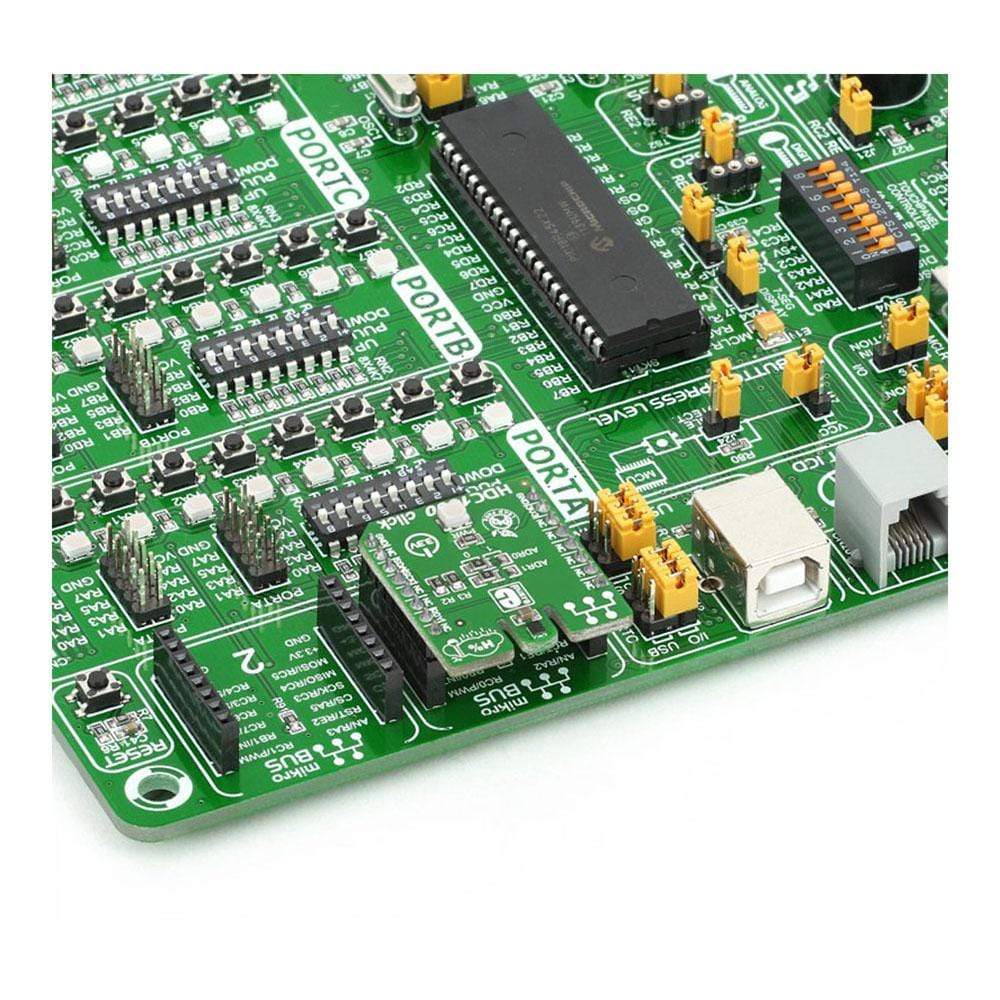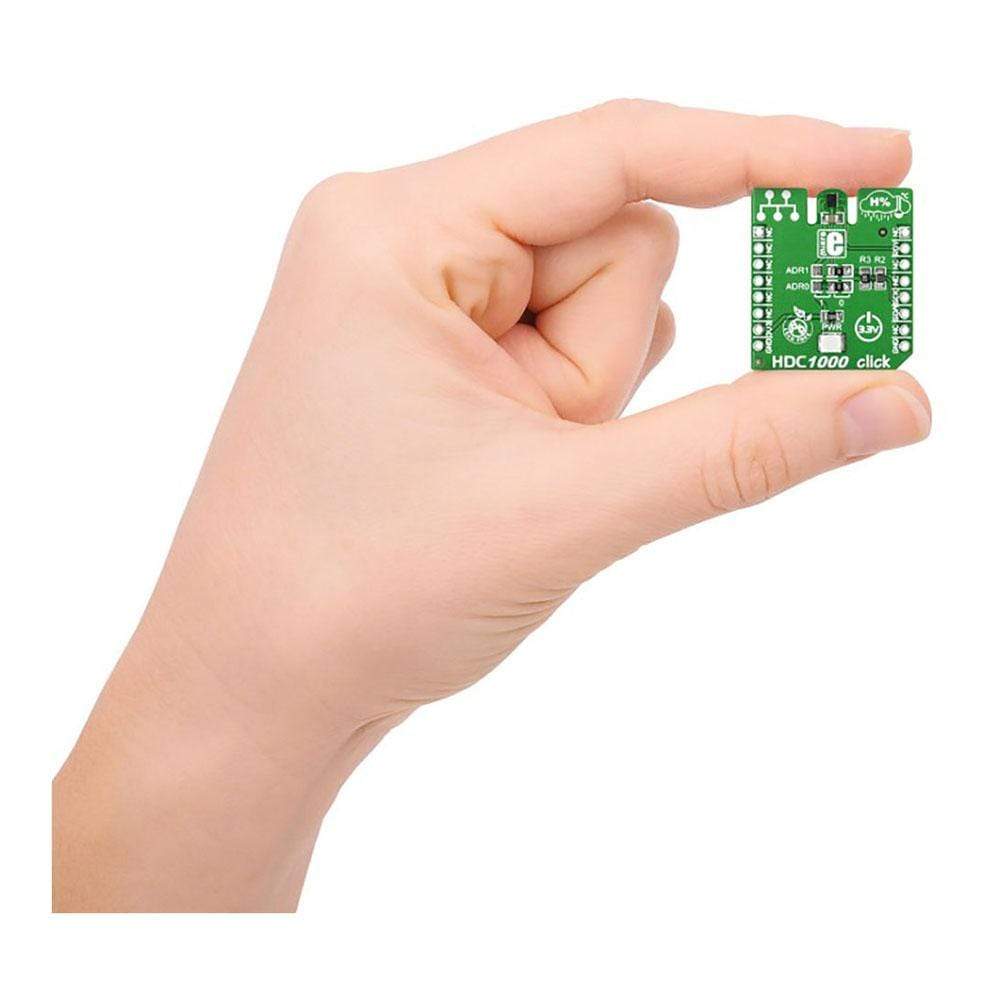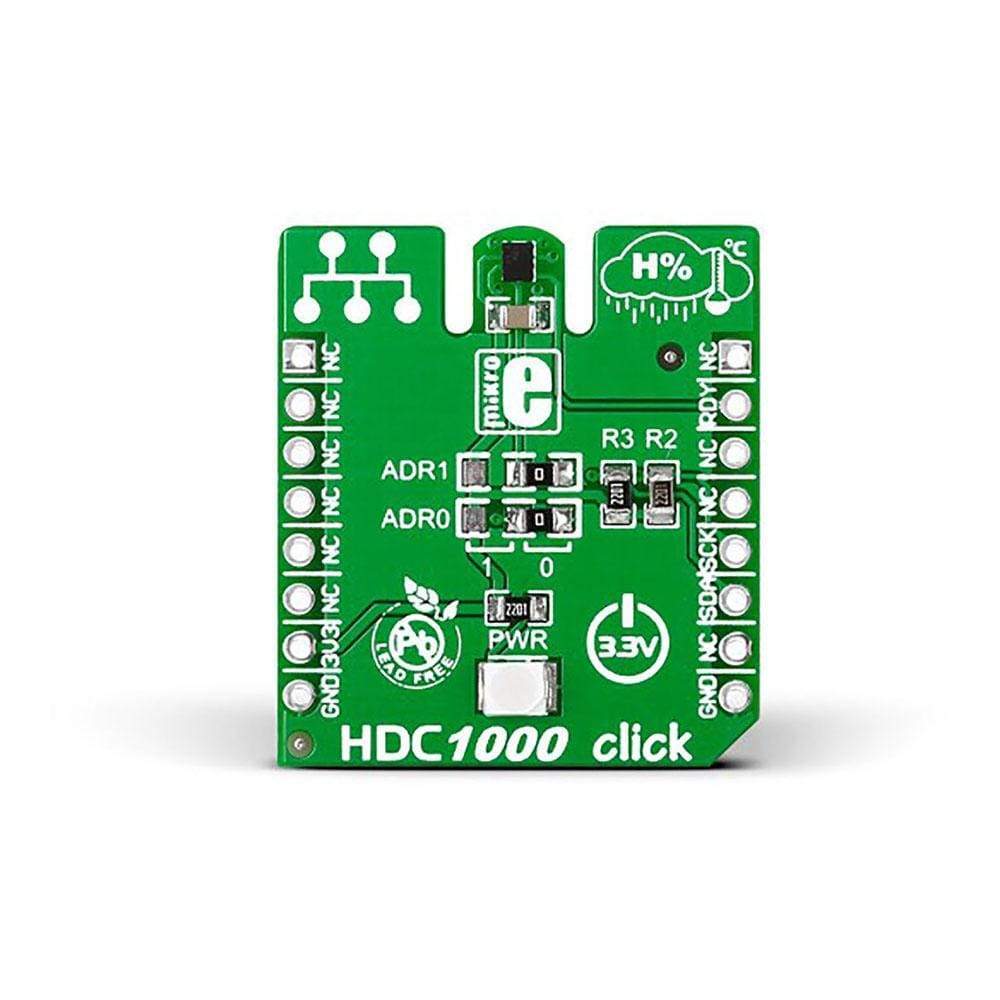
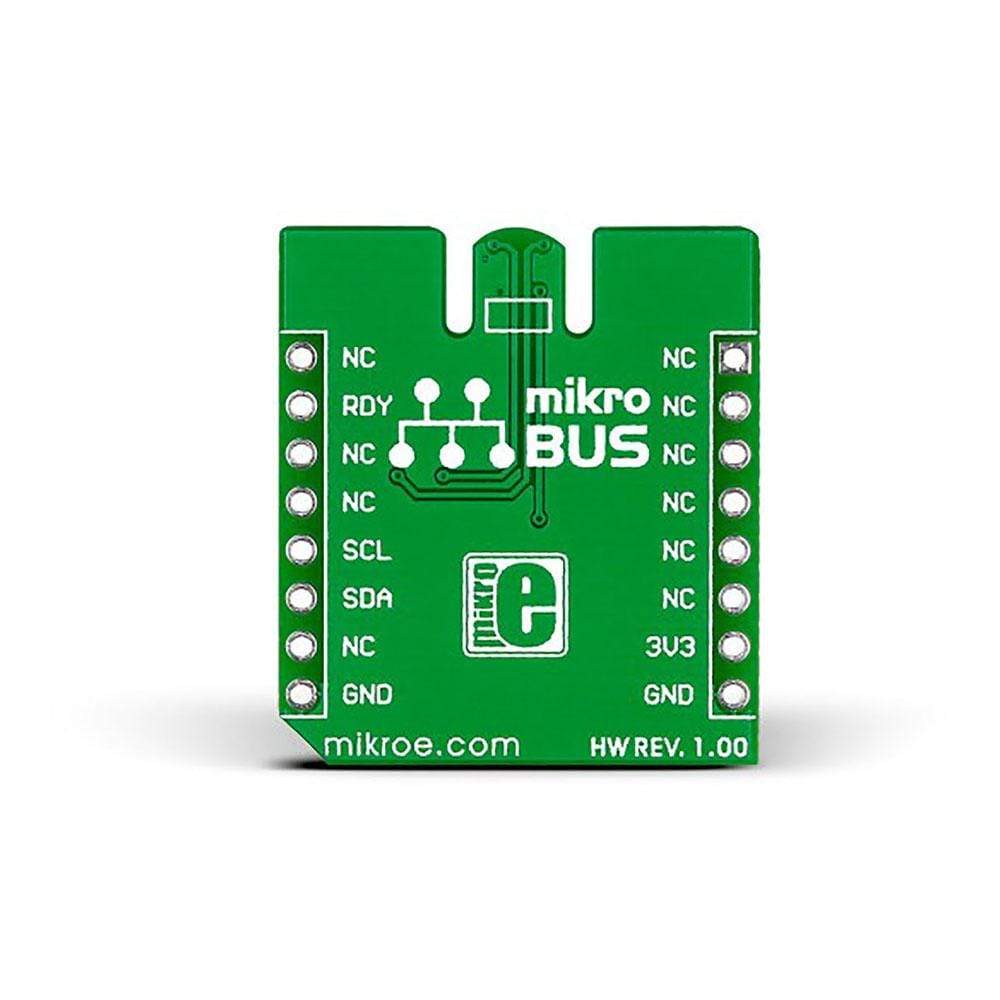
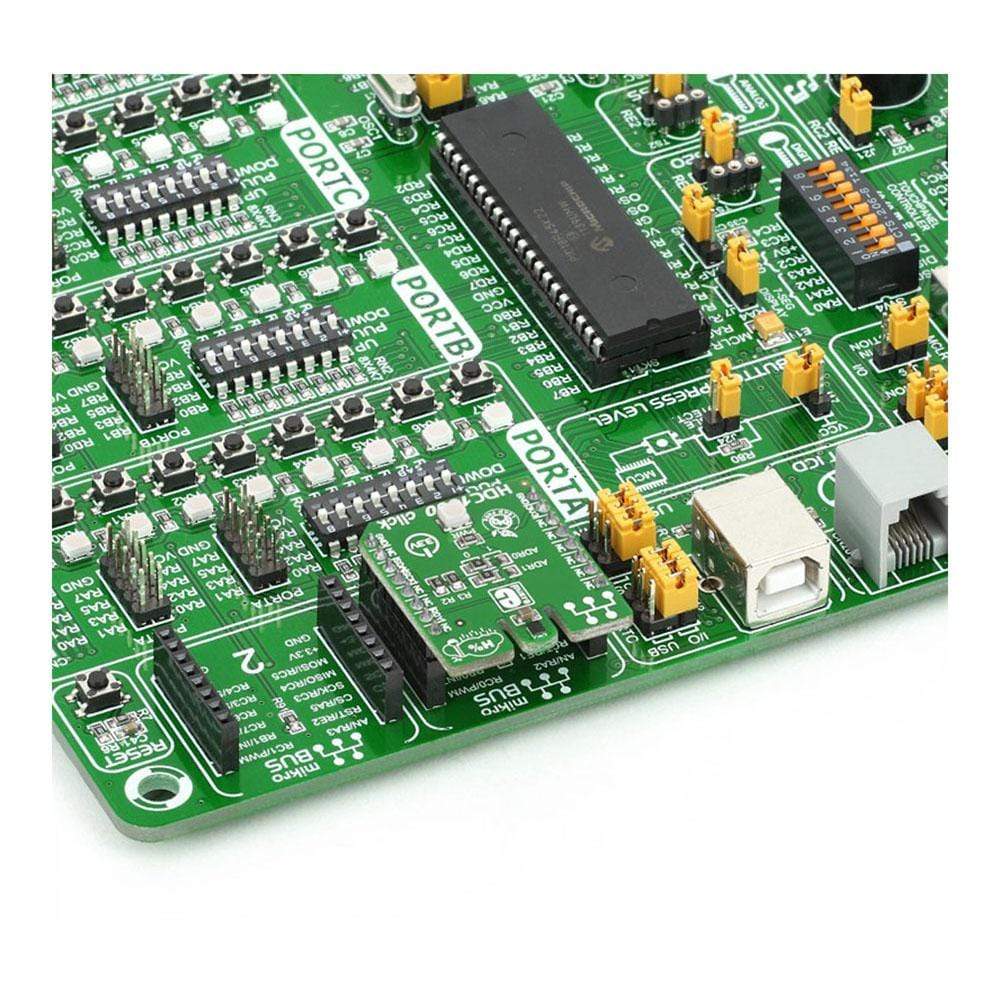
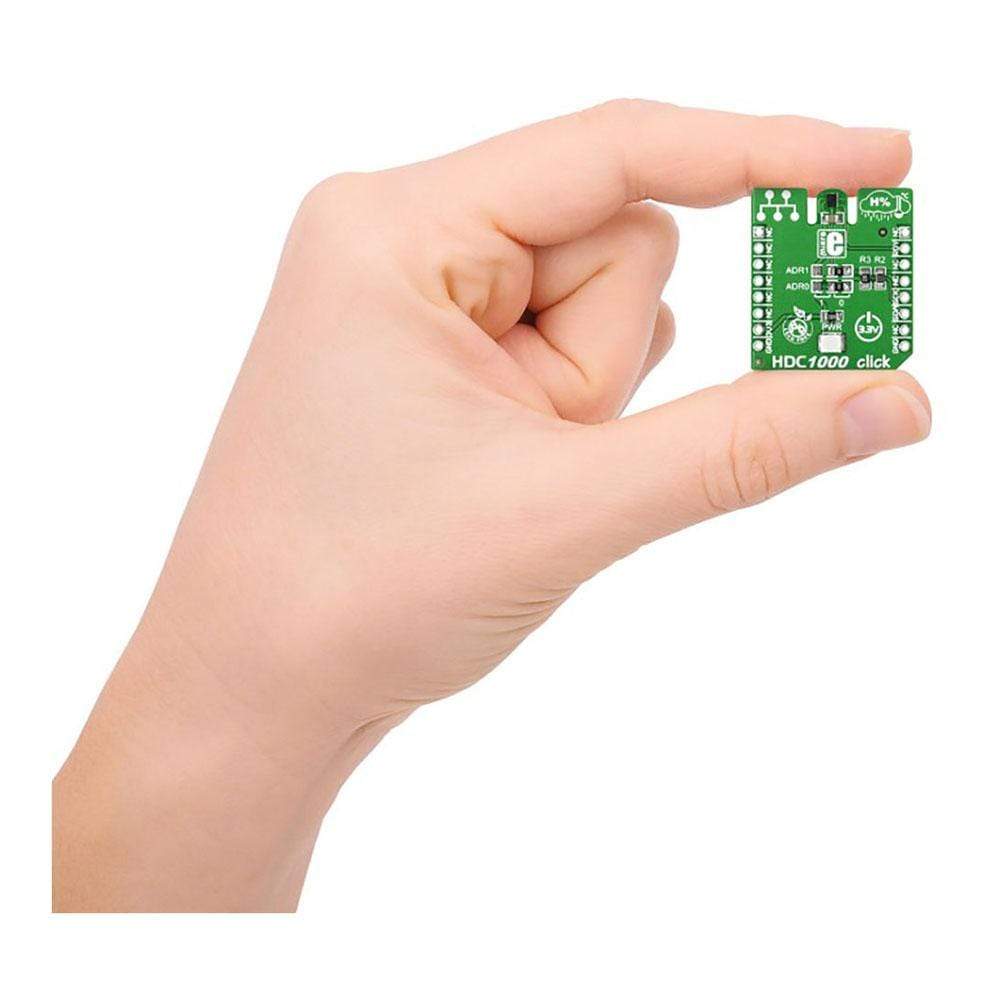
Overview
The HDC1000 Click Board™ is a humidity (and temperature) measurement Click Board™ carrying the HDC1000 sensor from TI. Its chief features are low power consumption, precision, and resistance to dust, dirt, and similar environmental contaminants.
Downloads
IC/Module: HDC1000 sensor
HDC1000 is a humidity measurement sensor that also performs a temperature measurement. Offering high precision measurement at low-power consumption, it measures humidity based on a novel capacitive sensor. The sensing element on the bottom part makes HDC1000 resistant to dust, dirt, and similar contaminants.
low-power Consumption
The low-power consumption features make the device suitable for battery or power harvesting applications. Since, the HDC1000 sensor operates in two modes: sleep mode and measurement mode. In the sleep mode, it operates at a typical 110nA of current consumption, which makes the averaged current consumption minimal. Furthermore, the low-power consumption minimizes any self-heating.
I2C Serial Bus Address Configuration
HDC1000 Click Board™ communicates with the target board MCU through I2C lines. The HDC1000 sensor operates only as a slave device on the I2C bus interface. A pair on on-board jumpers enable the user to specify the slave byte address, with four to choose from. The slave address byte contains seven address bits besides a direction bit that specifies the intent to perform a read or write process.
| General Information | |
|---|---|
Part Number (SKU) |
MIKROE-1797
|
Manufacturer |
|
| Physical and Mechanical | |
Weight |
0.026 kg
|
| Other | |
Country of Origin |
|
HS Code Customs Tariff code
|
|
EAN |
8606015076263
|
Warranty |
|
Frequently Asked Questions
Have a Question?
Be the first to ask a question about this.

